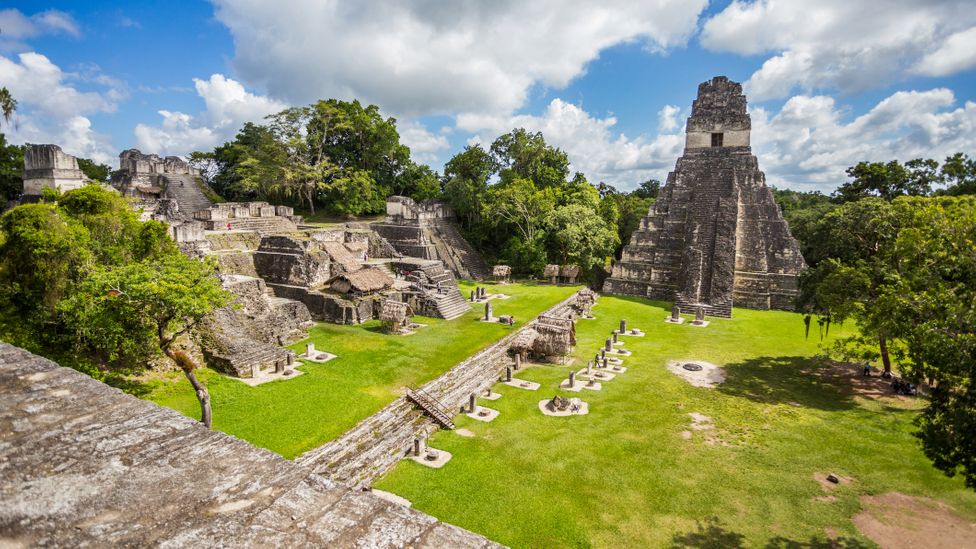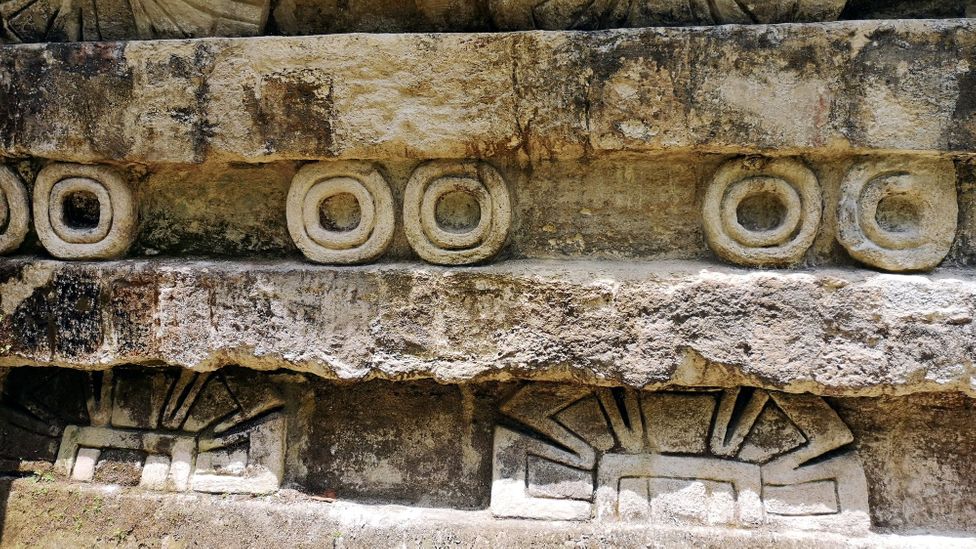Anthropology
Related: About this forumThe Maya's ingenious secret to survival

Mayan ruins at Tikal National Park, Guatemala
By Alex Fox
9th August 2021
Tikal was the economic and ceremonial hub of the Maya civilisation. But its stone palaces and temples would never have been constructed without mastery over one vital substance.
Standing in the ancient Mayan city of Tikal in Guatemala, visitors are surrounded by steep limestone pyramids nearly as tall as Notre Dame cathedral while the calls of howler monkeys and toucans emanate from the site's rainforest backdrop. Constructed without the aid of beasts of burden, metal tools or the wheel, these grandiose stoneworks served as the seats of power for the kings and priests who ruled over what was one of the most influential city states in the Maya realm, which spanned Mexico's Yucatan Peninsula, Guatemala, Belize as well as portions of Honduras and El Salvador.
Tikal was an economic and ceremonial hub of a civilisation that, in light of recent laser-based aerial surveys that revealed more than 60,000 structures hidden for centuries by thick jungle, may have once encompassed as many as 10 to 15 million people in total.
In the presence of Tikal's massive stone palaces and temples, each one oriented to attend to the sun's daily transit across the sky, the Maya's prowess as architects and astronomers looms large. But the Maya never would have accurately predicted eclipses and these monuments never would have risen up towards the sky without the mastery of something much more elemental to Mayan survival at Tikal: water.
With no rivers or lakes nearby, the Maya had to create a network of huge reservoirs at Tikal to collect and store enough rainwater during the region's prodigious wet season to last its sizable population – estimates range from 40,000 to as many as 240,000 people at the city's 8th Century peak – through the four- to six-month dry season. These reservoirs facilitated more than 1,000 years of Mayan presence at Tikal, from roughly 600 BC until the site's urban core was finally abandoned by the ruling class around 900 AD.
Last year, archaeologists using modern scientific techniques revealed a new depth to the Maya's hydrological feats. Sediment cores taken from Tikal's reservoirs show that the Maya created the oldest known water filtration system in the western hemisphere.

More:
https://www.bbc.com/travel/article/20210808-the-mayas-ingenious-secret-to-survival
SergeStorms
(19,199 posts)You have to wonder who had this ingenious idea in the first place. Did it elevate their position in the Mayan culture?
Some things will probably never be known, but they're fun to imagine.
PatrickforB
(14,570 posts)The fact that the Catholic priests who came with the Spanish invasion destroyed so many artifacts in these civilizations is an ongoing tragedy. So many things we will never know.
What, for instance, were they like as a people? Did they have heroes? What did their social strata look like? What was the extent of their economy and how did it operate? Did Mayan traders ply the northern and southern continents? Did they have ships? Did they conduct a regular census?
And now we know they were advanced enough to have created the first know filtration system for water, and these reservoirs. How did they fund these projects? Who did the labor? Clearly their architecture reflects mathematical and astrological/astronomical mastery. I have always wondered so much about the cultures that predated the Spanish and Northern European invasions.
Bernardo de La Paz
(49,000 posts)kabelad
(38 posts)Warpy
(111,254 posts)Ur, Angkor Wat, Rome, Mohenjo Daro. The systems were amazing, ingenious. Of course the Maya would come up with something.
Water was less of a problem for the Aztecs, they lived in a swamp. What they had to figure out was agriculture, which they did, again ingeniously.